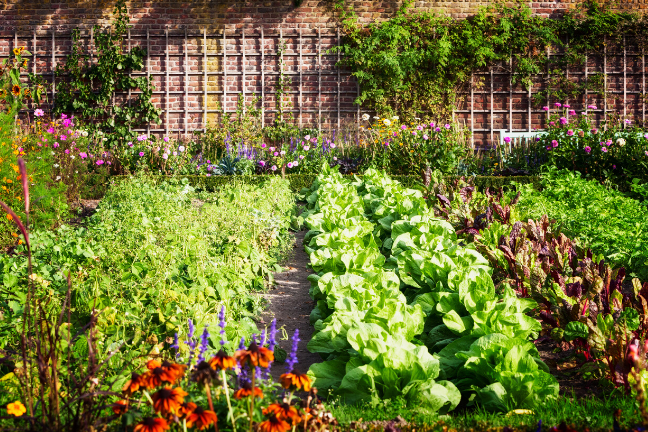Urban Gardening:
Urban gardening: a green oasis in the concrete jungle! 🌱 In today’s fast-paced world, finding a connection with nature can be a challenge, especially if you live in a bustling city. But fear not! Urban gardening is here to transform your surroundings into a thriving green space right at your fingertips. Whether you have a small balcony or a tiny backyard, the possibilities are endless. Let’s dive in and explore the wonderful world of urban gardening together!
Picture this: stepping outside of your apartment or house and being greeted by a vibrant array of plants and flowers. The air smells fresh, and you can hear the soothing sound of birds chirping. That’s the power of urban gardening! It’s about creating a sanctuary in the midst of urban chaos, where you can relax, unwind, and reconnect with nature. Plus, it’s a fantastic way to add a touch of color and life to your everyday surroundings.
But why stop there? Urban gardening is not just about aesthetics; it’s also about sustainability and self-sufficiency. Imagine growing your own vegetables, herbs, and fruits right in the heart of the city. Not only will you have access to fresh and organic produce, but you’ll also reduce your carbon footprint in the process. It’s a win-win! So, whether you’re a seasoned gardener or a newbie with a green thumb, urban gardening is a journey worth embarking on. Get ready to roll up your sleeves and dig into this exciting adventure!
So, are you ready to transform your urban space into a lush, green haven? Join us as we explore the ins and outs of urban gardening, from choosing the right plants to managing limited space. Together, we’ll unearth the secrets of creating a thriving garden in the concrete jungle. Let’s get our hands dirty and make our cities greener, one garden at a time! 🌿🌇

Urban Gardening: Transforming Concrete Jungles into Green Paradises
Urban gardening has gained significant popularity in recent years as people seek to reconnect with nature and create sustainable living spaces in densely populated cities. It is a practice that involves growing plants, herbs, and even vegetables in urban environments where space is limited. Urban gardening not only enhances the aesthetic appeal of cities but also brings numerous social, environmental, and health benefits. In this article, we will explore the different aspects of urban gardening, from its origins and techniques to the benefits it provides and the challenges gardeners may face. So, let’s dive into the world of urban gardening and discover how it can revolutionize urban living.
The Origins of Urban Gardening: From Community Gardens to Rooftop Farms
Urban gardening finds its roots in the community gardening movement that emerged during the late 19th century in Europe and North America. Concerns over food security, access to fresh produce, and a desire to create social gatherings led to the establishment of community gardens. These gardens not only provided shared spaces for people to grow their own fruits and vegetables but also served as gathering spots for social activities and educational programs.
Today, urban gardening has evolved to include various innovative techniques and approaches. One such approach is rooftop farming, where rooftops of buildings are transformed into productive green spaces. Rooftop farms utilize vertical gardening techniques, hydroponics, and other innovative methods to maximize space and produce an abundance of crops. These farms not only beautify urban skylines but also contribute to local food production and promote sustainability.
Benefits of Urban Gardening: From Health to Environmental Sustainability
Urban gardening offers a multitude of benefits, ranging from personal to societal and environmental. Let’s delve into some of the key advantages that make urban gardening a worthwhile endeavor:
1. Access to Fresh and Nutritious Food: With urban gardening, individuals can grow their own fruits, vegetables, and herbs, ensuring access to fresh and organic produce. This improves dietary choices, reduces reliance on store-bought produce, and promotes healthier eating habits.
2. Improved Mental Well-being: Engaging in gardening activities provides a therapeutic escape from the hustle and bustle of urban life. Cultivating plants, tending to them, and being surrounded by nature can reduce stress levels, alleviate anxiety and depression, and improve overall mental well-being.
3. Enhanced Community Cohesion: Urban gardening often takes the form of community gardens, bringing people together from diverse backgrounds. These shared spaces foster a sense of community, encourage social interaction, and provide opportunities for education and skill-sharing.
4. Environmental Sustainability: Urban gardens contribute to environmental sustainability by mitigating the urban heat island effect, improving air quality, reducing stormwater runoff, and providing habitat for pollinators and urban wildlife. They also promote sustainable gardening practices, such as composting and rainwater harvesting.
5. Aesthetically Pleasing Urban Landscapes: Urban gardens add beauty, color, and vibrancy to otherwise monotonous concrete landscapes. They transform vacant lots, rooftops, and balconies into green havens, improving the aesthetic appeal of cities and creating peaceful retreats for urban dwellers.
As we can see, urban gardening holds immense potential for transforming urban spaces and enriching the lives of city dwellers. Whether it’s a small balcony garden or a large community plot, the benefits are far-reaching.
Getting Started with Urban Gardening: Tools, Techniques, and Tips
Key Takeaways: Urban Gardening
- Urban gardening is a practice of growing plants and vegetables in urban areas.
- It allows people living in cities to grow their own food and connect with nature.
- Urban gardening can be done in small spaces like balconies, rooftops, or community gardens.
- It provides numerous benefits, including improved air quality, reduced stress, and increased access to fresh produce.
- Starting an urban garden is easy with container gardening, vertical gardening, and raised beds.
Frequently Asked Questions
Are you curious about urban gardening? Take a look below to find answers to some common questions!
1. Can I grow vegetables in a small apartment?
Absolutely! Urban gardening is all about utilizing small spaces effectively. You can grow vegetables in containers, window boxes, or even hanging gardens. Choose compact varieties like cherry tomatoes, salad greens, and peppers, which thrive in limited spaces. Supplement natural light with grow lights, and make sure to provide proper drainage for your plants. With a little creativity and planning, you can grow your own fresh produce in your apartment!
Remember to research each vegetable’s sunlight requirements, space needs, and appropriate pruning techniques. Regularly monitor your plants for pests and diseases, and provide them with appropriate nutrients and water. With proper care and attention, you can have a thriving indoor garden in your small apartment.
2. What are the benefits of urban gardening?
Urban gardening offers numerous benefits. Firstly, it allows you to have easy access to fresh, homegrown produce. This can not only save you money but also provide you with healthier, pesticide-free food options. Secondly, urban gardening promotes sustainability by reducing the carbon footprint caused by long-distance transportation of produce.
In addition, gardening has therapeutic benefits, serving as a stress-relieving activity that connects you with nature. It also creates a sense of community as you can engage with other gardeners in your neighborhood through community gardens and urban farming initiatives. Lastly, urban gardening helps beautify urban areas, transforming empty spaces into green havens that improve air quality and overall well-being.
3. How do I start an urban garden if I have limited space?
Even with limited space, you can start an urban garden. Begin by assessing the available space and deciding whether you want to grow plants indoors or outdoors. If you have a balcony or rooftop, consider container gardening or vertical gardening using trellises or wall-mounted planters. Indoors, you can use windowsills, shelves, or hanging pots to grow herbs and small vegetables.
Choose plants that are well-suited to your space, considering factors such as sunlight availability, temperature, and humidity. Use lightweight and portable containers if needed, and make sure to provide proper drainage. It’s crucial to establish a regular watering and maintenance routine to ensure the health of your plants. With careful planning and creativity, your limited space can be transformed into a thriving urban garden!
4. Can I grow plants without soil in an urban garden?
Yes, you can! Growing plants without soil is known as hydroponics. This method involves cultivating plants using a nutrient-rich water solution instead of traditional soil. Hydroponics is popular in urban gardening as it allows for more efficient use of space, faster plant growth, and better control over nutrients and water.
To set up a hydroponic system, you’ll need a container or tray to hold the water solution, a pump to oxygenate the water, and a nutrient solution specifically formulated for hydroponics. You can grow plants using various hydroponic techniques, such as nutrient film technique (NFT), deep water culture (DWC), or aeroponics. It’s important to learn about the specific requirements of the plants you wish to grow hydroponically and ensure that you maintain the proper nutrient balance and pH levels.
5. How do I combat pests and diseases in an urban garden?
Pests and diseases can pose a challenge in any garden, including urban gardens. To combat pests, practice regular monitoring and early detection. Inspect your plants regularly for signs of infestation, such as holes in leaves or chewed stems. Encourage natural predators, like ladybugs and birds, to control pest populations. You can also use organic pest control methods, such as neem oil or insecticidal soaps.
For disease prevention, ensure good air circulation around your plants by spacing them appropriately. Water your plants at the base rather than overhead to minimize moisture on leaves, which can lead to diseases. Remove any infected or diseased plants immediately to prevent the spread of pathogens. Applying organic fungicides or following proper crop rotation techniques can also help prevent diseases in your urban garden.

Back-to-basics urban farming is on the rise again | 60 Minutes Australia
Summary
Hey there! So, let’s wrap up what we’ve learned about urban gardening.
Urban gardening is all about growing plants in cities, where space can be limited. It’s a way to bring greenery and fresh food to urban areas. Many people are getting into urban gardening because it’s a great way to connect with nature and eat healthy food. Plus, it can help reduce pollution and create a sense of community.
There are different types of urban gardening, like rooftop gardens, community gardens, and even indoor gardens. No matter where you live, there’s always a way to start an urban garden. You can grow vegetables, herbs, flowers, or even keep a small fruit tree. Just make sure you have access to sunlight, water, and some soil.
Remember, urban gardening can be fun and rewarding, whether you have a small balcony or a big backyard. It’s a chance to get your hands dirty, learn about plants, and make your city a greener place. So, go ahead and give urban gardening a try!
